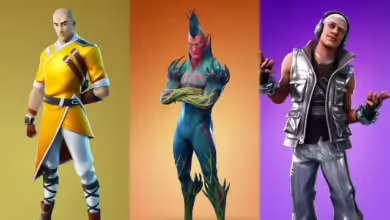The Art of Animation in Demon Slayer: How It Redefined the Genre

Introduction to Demon Slayer: Kimetsu no Yaiba
Demon Slayer: Kimetsu no Yaiba has taken the anime world by storm. Released in 2019, it quickly became a cultural phenomenon. With its captivating story and rich character development, it’s easy to see why fans are hooked. However, what truly sets this series apart is its breathtaking animation.
The artistry behind each frame elevates the storytelling experience to new heights. The vibrant colors, fluid movements, and intricate details create a visual feast that captures the audience’s imagination. Demon Slayer doesn’t just tell a story; it brings that story to life in ways we’ve never seen before.
Join us as we explore how Demon Slayer redefined the art of animation in anime and left an indelible mark on the industry. From groundbreaking techniques to unforgettable scenes, we’ll delve into why this series is not just another show but a game-changer for animation itself.
The History and Evolution of Animation in Anime
The journey of animation in anime began in the early 20th century. Pioneers like Jun’ichi Kōuchi and Noburō Ōfuji set the stage with innovative techniques that captured audiences’ imaginations.
As technology progressed, so did storytelling methods. The introduction of cel animation allowed for smoother movements and vibrant colors. This change marked a significant milestone in how narratives were visualized.
The 1980s brought a renaissance period, highlighted by classics such as “Akira” and “My Neighbor Totoro.” These films showcased unique art styles and deep emotional narratives, elevating anime to global recognition.
In recent years, advancements like digital animation have transformed production processes. Series like “Demon Slayer” harness these technologies to create breathtaking visuals that push creative boundaries further than ever before.

The Impact of Demon Slayer’s Animation on the Industry
Demon Slayer has made waves not just in viewership but also within the animation industry itself. Its stunning visuals have set a new benchmark for quality that many studios now aspire to achieve.
The series revitalized interest in traditional hand-drawn techniques, blending them with cutting-edge CGI. This fusion enhances the storytelling and provides viewers with immersive experiences unlike any seen before.
Competitors are increasingly investing in higher production values, spurred by Demon Slayer’s success. The series has showcased how meticulous attention to detail can captivate audiences globally.
Moreover, it reignited discussions about animation as an art form. Creators are more conscious of their craft, focusing on aesthetic choices that resonate emotionally with fans.
Demon Slayer’s impact is evident across various titles released post-2019. It’s clear that this anime isn’t merely a trend; it’s reshaping narratives around what animated storytelling can achieve.
Techniques Used in Demon Slayer’s Animation
Demon Slayer showcases a blend of traditional and modern animation techniques. One standout method is the use of digital effects, which enhances the visual storytelling without overshadowing character emotions.
The series employs fluid motion to create breathtaking fight sequences. This approach allows for dynamic camera angles that draw viewers into every battle. The choreography feels almost like a dance, capturing both the intensity and grace within each encounter.
Color palettes play an essential role as well. Vibrant hues highlight critical moments, while darker tones deepen emotional scenes. This contrast adds layers to both action and narrative.
Additionally, hand-drawn elements are expertly interwoven with CGI to create stunning landscapes. These backgrounds serve not just as settings but as characters in their own right, enriching the overall atmosphere of Demon Slayer’s world.
Analysis of Key Animated Scenes in the Series
Demon Slayer is renowned for its breathtaking animation, particularly in its key fight scenes. The clash between Tanjiro and Rui stands out, showcasing fluid motion and dynamic camera angles that immerse viewers in the battle. Each sword swipe feels impactful, enhanced by vibrant colors that convey intense emotions.
Another moment to note is Nezuko’s transformation. The visual effects used during her demon form amplify her power while capturing the essence of her struggle. This scene uses color palettes that shift dramatically, reflecting both beauty and danger.
The series also excels in quieter moments. For instance, Tanjiro’s encounters with nature are beautifully animated, highlighting a stark contrast between serenity and chaos. These scenes serve as breathers yet maintain an artistic quality that resonates deeply with fans.
These carefully crafted animations elevate not just the action but the story itself, making each episode a feast for the eyes.
Audience Reception and Critical Acclaim
Demon Slayer has captured the hearts of millions worldwide. Its animation quality, storytelling, and character development have resonated with audiences across different age groups.
Viewers have praised the series for its stunning visuals. The vibrant colors and fluid motion elevate each battle scene to an art form. Fans often highlight how these visuals enhance emotional depth.
Critics also recognize Demon Slayer’s impact on anime as a whole. Many acclaim it as a benchmark in modern animation techniques. It pushes boundaries that previously defined the genre.
The show’s success is reflected in numerous awards and accolades too. Notably, it took home prestigious honors at various anime festivals and award ceremonies.
Social media buzz around Demon Slayer further illustrates its cultural significance. Memes, fan art, and discussions abound online, showcasing a dedicated community eager to share their love for the series.
Conclusion: The Lasting Influence of Demon Slayer’s Animation
Demon Slayer has left an indelible mark on the world of anime. Its stunning animation techniques have set a new standard, inspiring both creators and fans alike. The series demonstrated that high-quality visuals can elevate storytelling to unprecedented heights.
The stylistic choices made by the animators are nothing short of revolutionary. Vivid colors, fluid movement, and intricate detail create an immersive experience for viewers. These elements resonate deeply with audiences, allowing them to feel every emotion portrayed on screen.
As other studios strive to match this level of artistry, it’s clear that Demon Slayer is more than just a popular series; it represents a shift in the industry paradigm. The success has encouraged experimentation and innovation within anime production. This influence will undoubtedly shape future projects for years to come.
The legacy of Demon Slayer’s animation transcends mere aesthetics; it redefines what is possible in animated storytelling. Fans will continue to appreciate its beauty long after the final episode airs. As we look ahead, it’s exciting to think about how this groundbreaking approach will inspire forthcoming generations of animators and storytellers in the anime realm.





